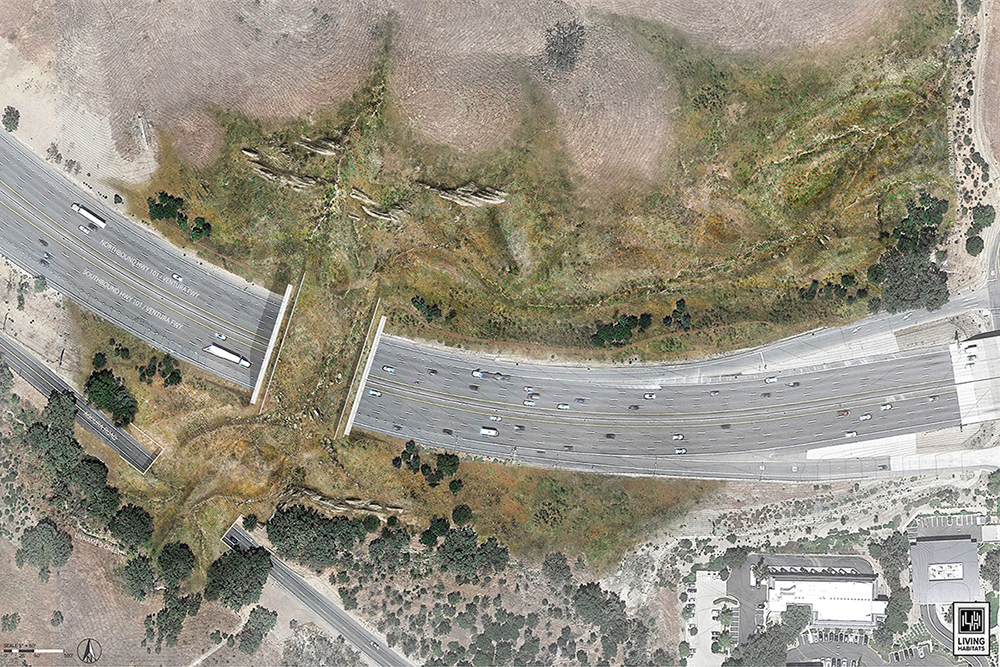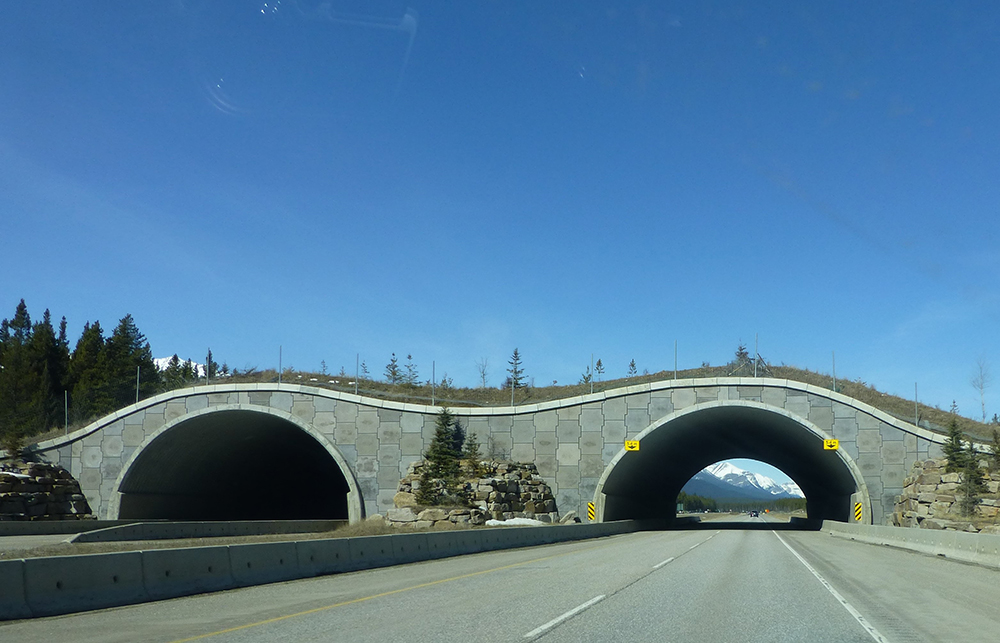
The Canadian province of Alberta has started construction of another wildlife overpass, adding to what is already the largest number of such structures anywhere in the world.
Similar to the other six overpasses - and 38 underpasses - between the east gate of Banff National Park and the border with British Columbia and Alberta, it will cross the four-lane Trans-Canada Highway, designated Highway 1. However, it will be the first overpass outside the park, being located east of the town of Canmore and close to the hamlet of Lac Des Arcs.
Completion of the $14 million latest project is expected in the autumn of 2023, said Rajan Sawhney, Alberta’s transportation minister. Construction is being done by PME EllisDon.
The Trans-Canada Highway is a main artery from the city of Calgary, through Banff and into the neighbouring province of British Columbia. Around 30,000 cars and long-distance heavy goods vehicles travel the route daily. As a result the Trans-Canada Highway had a history, prior to the mid-1980s, of many vehicle and animal collisions at high speed, often around 100kph, especially since it was widened back then into four lanes.
The new overpass, 16km from the gates of Banff National Park, will also include about 12.5km of high wildlife fencing along the highway to help direct animals towards the overpass.
The existing overpasses are used by most every large animal and even migratory herds, including elk, deer, bears and wolves – some on a daily basis, according to park authorities and research studies. Accidents have dropped by more than 80% since the first overpasses were constructed in the late 1990s.
Wily coyotes
Meanwhile, construction has started in California on what reportedly will be the world’s largest animal crossing bridge over a highway.
The 67m-long, 50m-wide structure will span the eight-lane California state freeway 101 (Ventura Freeway) at Liberty Canyon in Agoura Hills, near Los Angeles. Phase two of the project will extend the structure over the nearby local two-lane Agoura Road.
The project has been several years in various design and approval stages and will cost up to $90 million. When complete in late 2025, the crossing will be named the Wallis Annenberg Wildlife Crossing in honour of the project’s largest donor, Wallis Annenberg and the Annenberg Foundation which gave $25 million.

The Santa Monica Mountains are home to dozens of large animals and mammals, including coyotes, cougars and mountain lions that search far and wide for mating and food. There are also mule deer, goat snakes, lizards and rabbits. The freeway dissects many conservation preserves and many of these animals meet their end attempting to cross the busy freeway that carries around 300,000 vehicles each day.
The Resource Conservation District of the Santa Monica Mountains completed the initial design and 3D modelling of the overpass, working closely with Caltrans – California’s department of transportation.
The actual bridge crossing – nearly half a hectare in size - is part of a larger 3.2-hectare habitat restoration project that will include phase two over the adjacent two-lane road and surrounding countryside.
A tunnel was considered as an alternative but it would have been less able to attract use by wildlife and wouldn’t sustain vegetation. Meanwhile, fencing at each end of the planned bridge will help funnel animals towards using the bridge. Hikers, mountain bikers and equestrians will also be able to use the crossing.
Caltrans has said it will oversee construction of the project because it is over a major transportation route and the agency will install cameras to allow for live images and video of construction work. Caltrans also said that it is considering wildlife crossings over US 101 at Conejo Valley and at Rocky Peak and Moorpark on State Route 118. ITS





